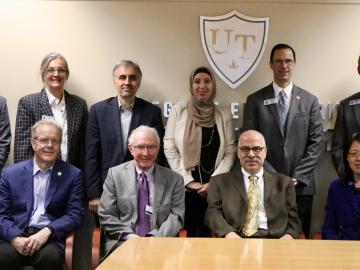
Filter News
Area of Research
- (-) Materials (160)
- (-) Supercomputing (75)
- (-) Transportation Systems (1)
- Advanced Manufacturing (23)
- Biology and Environment (27)
- Building Technologies (1)
- Computational Biology (1)
- Computer Science (3)
- Electricity and Smart Grid (3)
- Energy Science (155)
- Functional Materials for Energy (2)
- Fusion and Fission (10)
- Fusion Energy (4)
- Isotope Development and Production (1)
- Isotopes (7)
- Materials Characterization (2)
- Materials for Computing (22)
- Materials Under Extremes (1)
- National Security (16)
- Neutron Science (127)
- Nuclear Science and Technology (15)
- Quantum information Science (1)
- Sensors and Controls (1)
News Topics
- (-) 3-D Printing/Advanced Manufacturing (26)
- (-) Composites (9)
- (-) Frontier (32)
- (-) Grid (9)
- (-) Materials (79)
- (-) Materials Science (83)
- (-) Neutron Science (42)
- (-) Space Exploration (5)
- Advanced Reactors (5)
- Artificial Intelligence (39)
- Big Data (22)
- Bioenergy (18)
- Biology (14)
- Biomedical (22)
- Biotechnology (2)
- Buildings (8)
- Chemical Sciences (32)
- Clean Water (3)
- Computer Science (99)
- Coronavirus (17)
- Critical Materials (15)
- Cybersecurity (8)
- Energy Storage (37)
- Environment (35)
- Exascale Computing (26)
- Fusion (8)
- High-Performance Computing (45)
- Irradiation (1)
- Isotopes (14)
- ITER (1)
- Machine Learning (15)
- Mathematics (2)
- Microscopy (29)
- Molten Salt (3)
- Nanotechnology (42)
- National Security (8)
- Nuclear Energy (20)
- Partnerships (11)
- Physics (34)
- Polymers (18)
- Quantum Computing (21)
- Quantum Science (33)
- Security (7)
- Simulation (16)
- Software (1)
- Summit (43)
- Transportation (20)
Media Contacts

Scientists at have experimentally demonstrated a novel cryogenic, or low temperature, memory cell circuit design based on coupled arrays of Josephson junctions, a technology that may be faster and more energy efficient than existing memory devices.

Gina Tourassi has been appointed as director of the National Center for Computational Sciences, a division of the Computing and Computational Sciences Directorate at Oak Ridge National Laboratory.

Researchers at Oak Ridge National Laboratory demonstrated that an additively manufactured polymer layer, when applied to carbon fiber reinforced plastic, or CFRP, can serve as an effective protector against aircraft lightning strikes.

Researchers at the Department of Energy’s Oak Ridge National Laboratory have received five 2019 R&D 100 Awards, increasing the lab’s total to 221 since the award’s inception in 1963.

ORNL and The University of Toledo have entered into a memorandum of understanding for collaborative research.

The type of vehicle that will carry people to the Red Planet is shaping up to be “like a two-story house you’re trying to land on another planet.

Using the Titan supercomputer and the Spallation Neutron Source at the Department of Energy’s Oak Ridge National Laboratory, scientists have created the most accurate 3D model yet of an intrinsically disordered protein, revealing the ensemble of its atomic-level structures.

Quanex Building Products has signed a non-exclusive agreement to license a method to produce insulating material from ORNL. The low-cost material can be used as an additive to increase thermal insulation performance and improve energy efficiency when applied to a variety of building products.

Researchers at Oak Ridge National Laboratory proved that a certain class of ionic liquids, when mixed with commercially available oils, can make gears run more efficiently with less noise and better durability.

Using additive manufacturing, scientists experimenting with tungsten at Oak Ridge National Laboratory hope to unlock new potential of the high-performance heat-transferring material used to protect components from the plasma inside a fusion reactor. Fusion requires hydrogen isotopes to reach millions of degrees.


